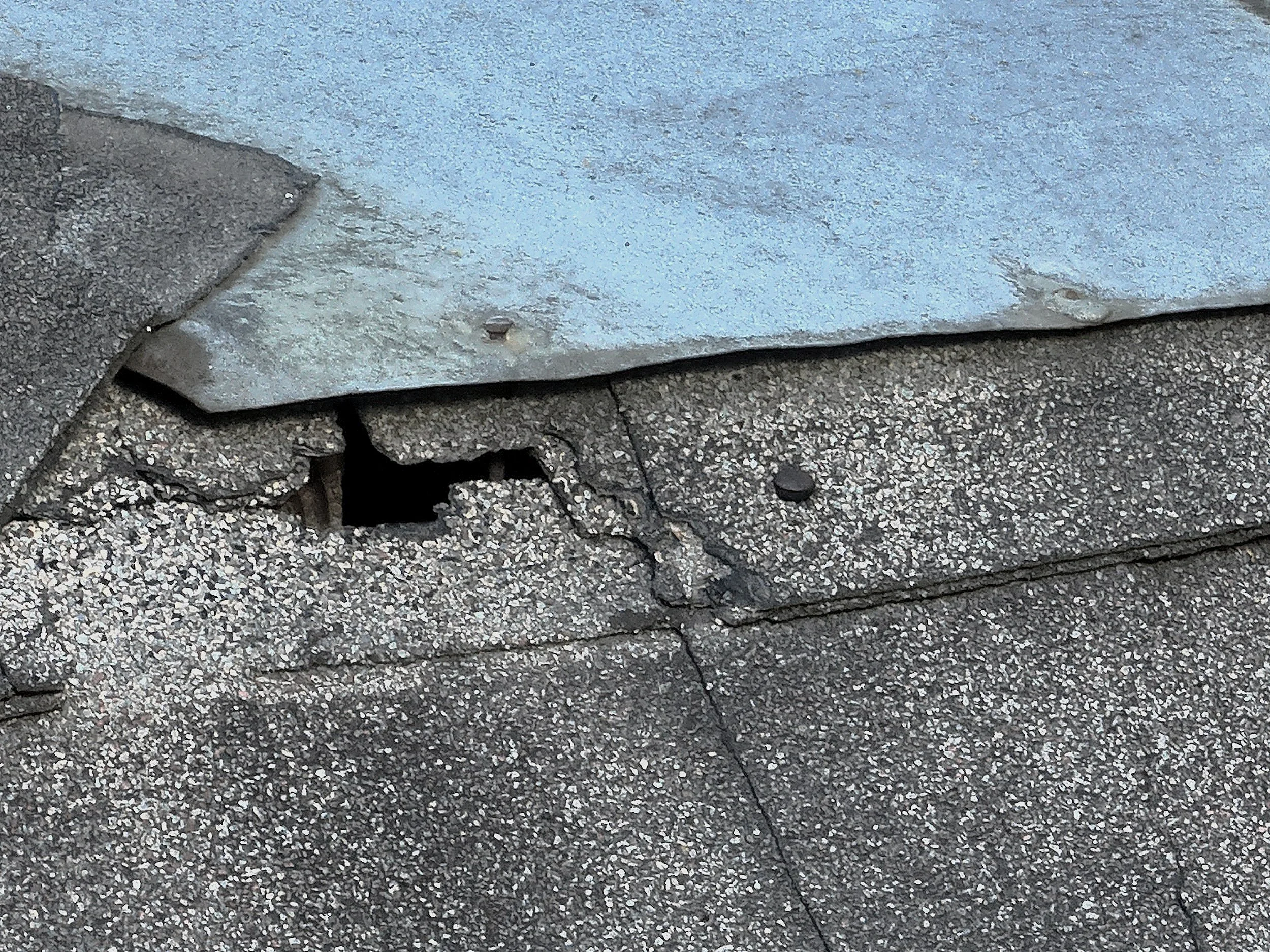Understanding Moisture Intrusion — Causes, Consequences, and Detection
Written by a Professional Home Inspector & Level 1 Thermographer
Using the nail head as reference to the right of the hole, this small opening creates a large opportunity for water to get into the home. The amount of damage from a hole this size is very costly!
Moisture is one of a home’s most silent and destructive enemies. It slips in unnoticed, hides behind walls or beneath floors, and quietly damages structural components, breeding mold and rot along the way. In my 20+ years of inspecting homes, moisture intrusion is one of the most common—and costly—issues I find.
Luckily, with advanced detection methods like thermal imaging and moisture metering, we can locate and address these problems early—before they turn into major repairs or health hazards.
What Causes Moisture Intrusion?
Moisture enters buildings in more ways than most people realize. Common sources include:
Roof leaks due to missing shingles or flashing
Poorly sealed windows or siding
Plumbing leaks behind walls
Improper grading or drainage around the foundation
HVAC condensation or high indoor humidity
Even a tiny breach in your home’s envelope can become a long-term issue if it goes unnoticed.
Consequences of Hidden Moisture
Unchecked moisture is more than just a nuisance—it’s a danger. Here’s why:
Structural rot weakens framing, subfloors, and roof decking
Mold growth can lead to serious respiratory and health issues
Electrical hazards arise when moisture infiltrates junction boxes or outlets
Pest infestations often follow water-damaged materials
Decreased insulation performance raises energy costs
How Moisture Is Detected During an Inspection
As a licensed inspector and certified thermographer, I use several tools to detect moisture intrusion:
Thermal imaging highlights temperature anomalies caused by damp materials
Moisture meters confirm elevated moisture levels in drywall, wood, or tile
Drone imaging reveals roof and exterior issues from above
Visual and tactile inspection confirms surface conditions, staining, or odor
This multi-method approach means I don’t guess—I know where the water is and where it’s going.
When Should You Check for Moisture?
Routine checks are wise, but certain situations call for urgent inspection:
After intense storms or hurricanes
If you see stains on walls or ceilings
When buying or selling a home
Following plumbing issues or roof repairs
If indoor air feels musty or unusually humid
Final Thought: Know Before It Grows
Moisture intrusion rarely stops on its own—it grows, spreads, and worsens over time. The good news? With expert inspection and today’s technology, it can be caught and corrected early.
If you’re unsure about the condition of your property, don’t wait for musty odors or stained ceilings to tell you something’s wrong. I offer detailed moisture inspections backed by experience and advanced detection tools.
Protect your home from hidden water damage. Book a moisture intrusion inspection today.

